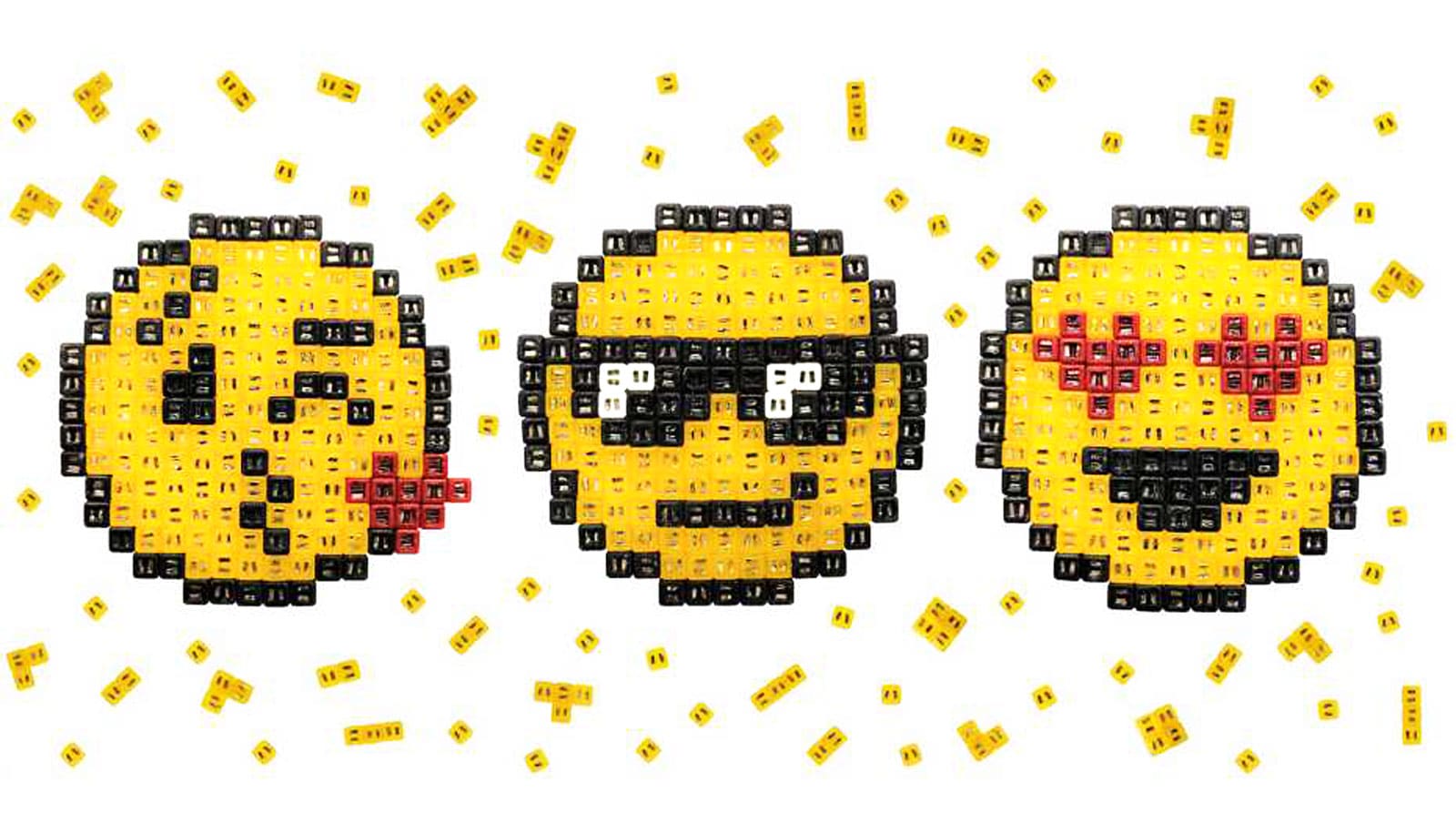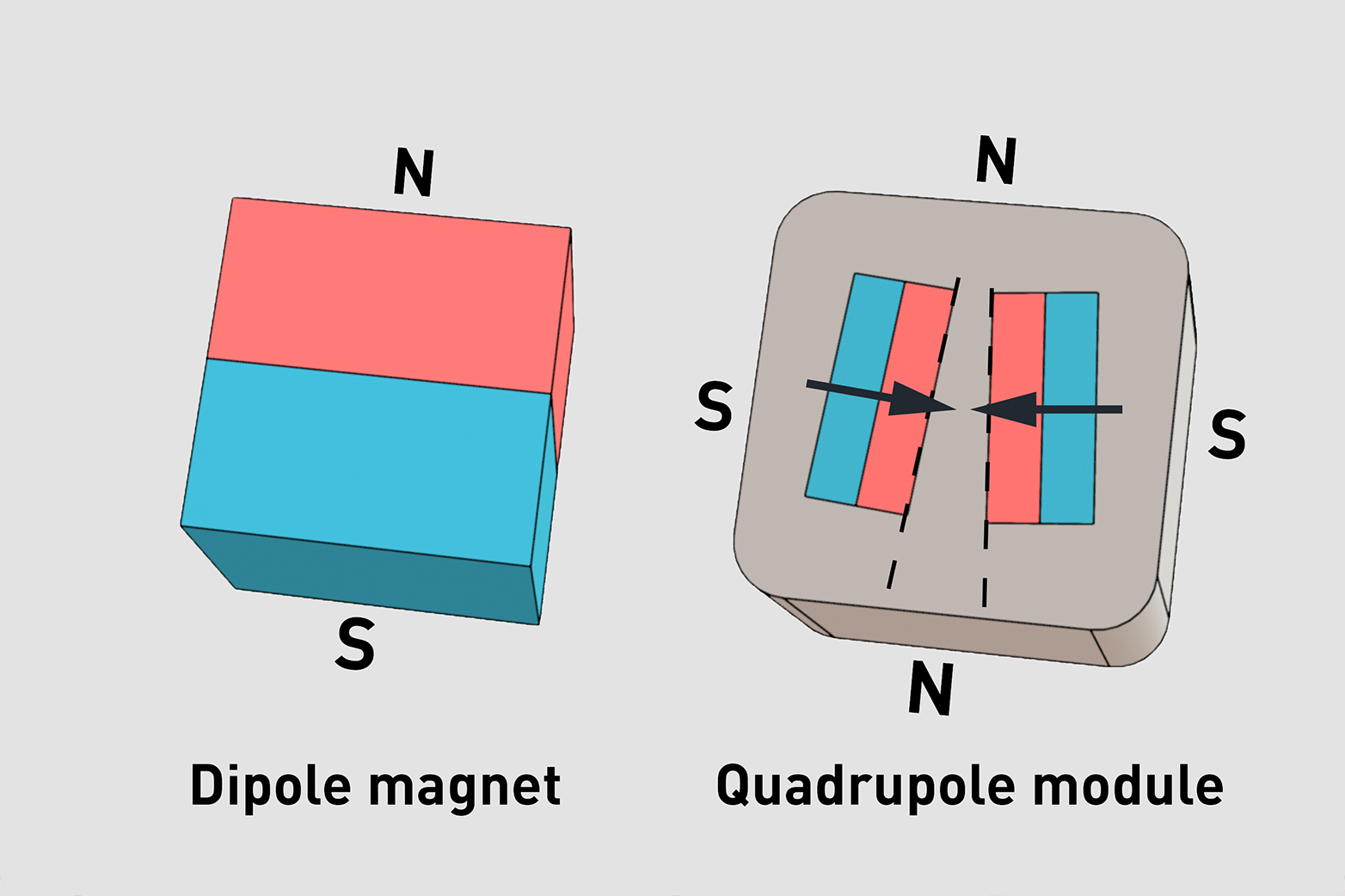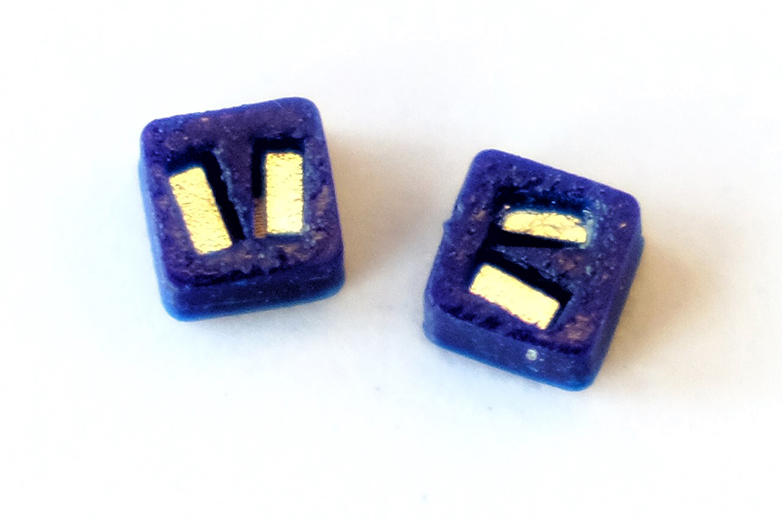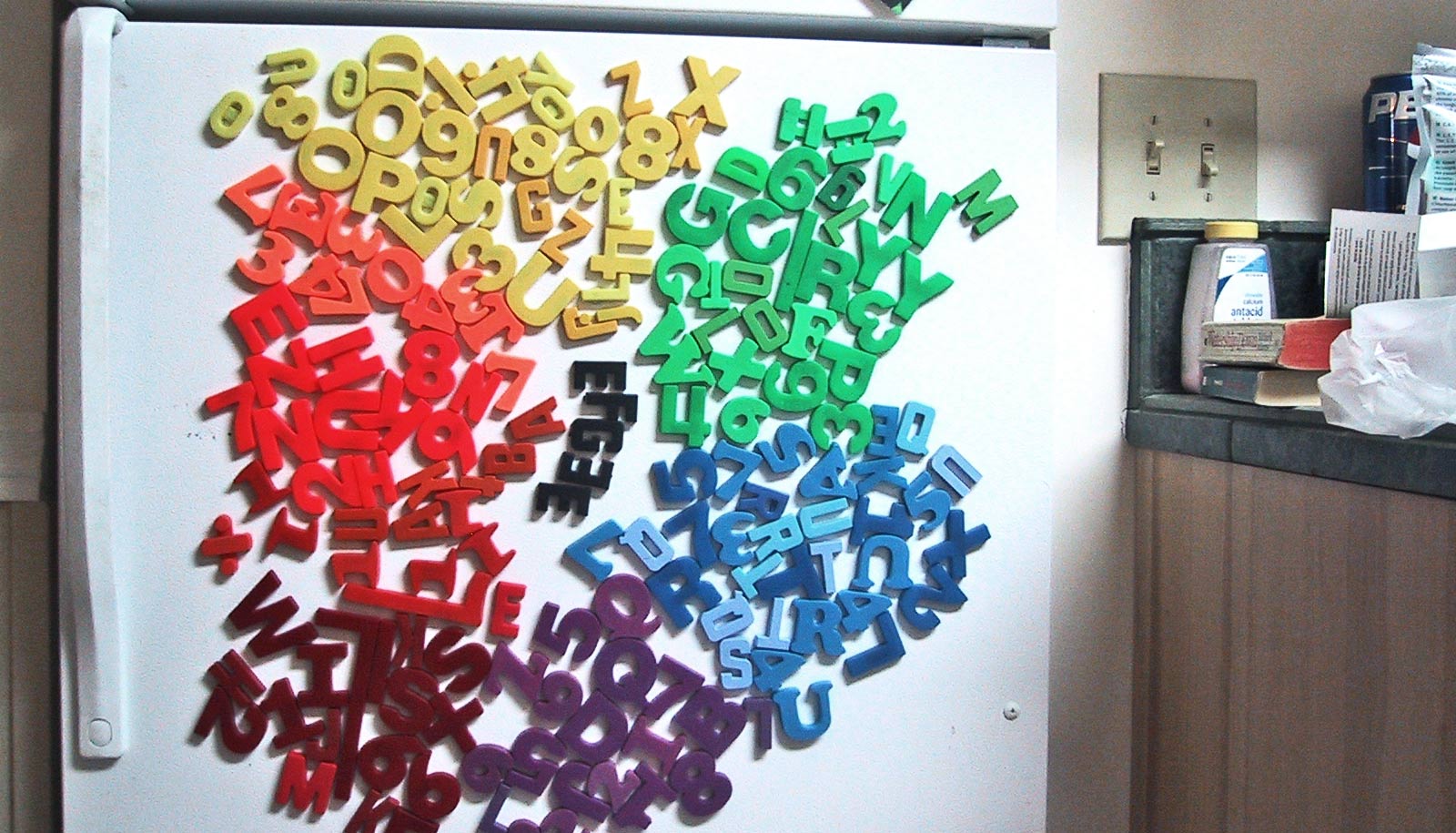
Quadrupole modules can be assembled into two-dimensional shapes, including pixel art emoji like these. (Credit: Hongri Gu/ETH Zurich)
Tiny magnetic building blocks are quadrupolar
New magnetic building blocks, which the scientists call modules, are not dipolar but quadrupolar. That gives the tiny components possibility in soft robotics.

An external magnetic field controls new cube-shaped magnetic building blocks that can form 2D shapes.
If you’ve ever tried to put several really strong, small cube magnets right next to each other on a magnetic board, you’ll know that you just can’t do it. The magnets always arrange themselves in a column sticking out vertically from the magnetic board. Moreover, it’s almost impossible to join several rows of these magnets together to form a flat surface.
It’s impossible because magnets are dipolar. Equal poles repel each other, with the north pole of one magnet always attaching itself to the south pole of another and vice versa. This explains why they form a column with all the magnets aligned the same way.
The new building blocks, which the scientists call modules, are not dipolar but quadrupolar, which means they each have two north poles and two south poles.
Inside each of the modules, which are 3D printed in plastic, there are two small conventional dipole magnets with their equal poles facing each other. The building blocks can be assembled like little chessboards to form any two-dimensional shapes.
Because the south and north poles attract each other, a quadrupole building block with its two south poles facing left and right will attract, on each of its four sides, a building block that is rotated by 90 degrees so its north poles on face left and right.
Building on this principle, the scientists made colored modules with an edge length of just over two millimeters. They assembled them into pixel art emoji to demonstrate what the modules can do.
The modules could be useful, however, not just fun. “We’re particularly interested in applications in the field of soft robotics,” says Hongri Gu, a doctoral student in Professor Bradley Nelson’s group at ETH Zurich and lead author of the paper on the work in Science Robotics.
The quadrupole dominates the magnetic properties of the modules. It is a little more complicated than that, though, because in addition to the strong quadrupole, the scientists also built a weak dipole into the building blocks. They achieved this by arranging the little magnets in the module at a slight angle to each other rather than parallel.


“This causes the modules to align themselves with an external magnetic field, like a compass needle does,” Gu explains. “With a variable magnetic field, we can then move the shapes we have built out of the modules. Add in some flexible connectors and it’s even possible to build robots that can be controlled by a magnetic field.”
Gu says that their work was initially about developing the new principle. It is size-independent, he says, meaning that there is no reason why much smaller quadrupole modules aren’t possible.
The scientists are also studying how the modules could be used to combine a linear structure into a multidimensional object with the help of a magnetic field. For example, imagine a thread of such modules, perhaps forming a stent, entering the body during a medical procedure via a tiny opening. A magnetic field could assemble it into a multidimensional structure within the body.
Source: ETH Zurich
The post Tiny magnetic building blocks are quadrupolar appeared first on Futurity.
Share this article:
This article uses material from the Futurity article, and is licenced under a CC BY-SA 4.0 International License. Images, videos and audio are available under their respective licenses.
Related Articles:
With a twist, graphene shows new kind of magnetism
Aug. 1, 2019 • futuritySpecial magnets make spin-based memory more efficient
Dec. 28, 2018 • futurityLinks/images:
- https://www.futurity.org/micromachine-bird-nanomagnets-2205972-2/
- https://www.futurity.org/robots-mobility-1191742-2/
- http://dx.doi.org/10.1126/scirobotics.aax8977
- https://ethz.ch/en/news-and-events/eth-news/news/2019/11/magnets-for-the-second-dimension.html
- https://www.futurity.org/magnetic-cubes-modules-2208032-2/
- https://www.futurity.org


